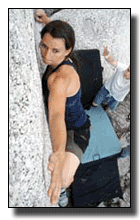The History of Health and Medicine Seminar series continued today with a rather provocative paper by Dr. Ann Herring and Stacey Lockerbie. “The Coming Plague: Global panic, local repercussions and avian influenza,” contends that globalization and spread of information has preceded the potential epidemic with outcomes that alarm potentially unduly and have enormous local economic and social impact.
“The Coming Plague: Global panic, local repercussions and avian influenza,” contends that globalization and spread of information has preceded the potential epidemic with outcomes that alarm potentially unduly and have enormous local economic and social impact.
Herring is well known for her work on the history of infectious disease and very specifically on its impact on native populations. Lockerbie work involves the transition of aquaculture in central Vietnam from local to a global commodity. Their work coincides as a result of Lockerbie’s first-hand experience in Vietnam with the impact of poultry culls and the movement towards larger state-controlled factory operations as the government (over)reacted to the bird flu. This paper centres on the process of anchoring, where the understanding of a new disease is linked and configured to past epidemics. In this case, from 2001, the Avian flu (a disease first identified in the late nineteenth century) has been anchored to the Spanish Influenza of 1918. The result of which has been global panic and extreme attempts to erradicate the potential impact of the diseease with little or no undersatanding of its true vectors or study of the impact of the remedies enacted.
The first part of the talk dealt with a  factual exploration of the known imapct of the H5N1 virus looking at the spatial diemnsions of the current outbreak. As Herring identifies, only 271 cases worldwide have been identified in human and of these only 160 have resulted in death. She questions what has made this anchor to the 1918 influenza so pervasive. There have been epidemics in the 1950s, 1960s and again the 1970s that more closely reflect the nature of the current disease, but these seem to have been simply overlooked. Questions raised after the talk suggested that disease may represents another way that borders cannot be secured…and thus in a security conscious world, this is a magnified threat – one particularly witty respondent suggested the picture of a terrorist armed with a chicken-bomb.
factual exploration of the known imapct of the H5N1 virus looking at the spatial diemnsions of the current outbreak. As Herring identifies, only 271 cases worldwide have been identified in human and of these only 160 have resulted in death. She questions what has made this anchor to the 1918 influenza so pervasive. There have been epidemics in the 1950s, 1960s and again the 1970s that more closely reflect the nature of the current disease, but these seem to have been simply overlooked. Questions raised after the talk suggested that disease may represents another way that borders cannot be secured…and thus in a security conscious world, this is a magnified threat – one particularly witty respondent suggested the picture of a terrorist armed with a chicken-bomb.
So, if the threat has been magnified, what of the response to it? In this case, Lockerbie’s experience in Vietnam suggest that it has been simply enormous, especially at the local level. In a place where the consumption and availability of chicken forms part of cultural practise, the mass culling of flocks and the move to take the chicken out of backyards and concentrate in factory surroundings destroys community bonds and cultural links. The authors point to the Vietnamese state desire to be seen as taking appropriate response to the threat has led to the elimination of live bird markets and driven the adoption of supermarkets. Culturally this has a huge impact as markets had centred a local system of trust and commitment amongst vendors and buyers. More ironically, by trying to gain biosecurity, and shift poultry production to safe and clean spaces, science is in fact driving production into the very sort of places in western nations that strains mutate and erupt.
Thus those in the regions affected by H5N1 suffer doubly, both from the disease itself as well as global condemnation for cultural practices that may not in fact be at the root of the threat.
Clearly, the potential of the Avian Flu Epidemic is different because it is being configured in a more global fashion than things have been in the past. The reality is that we don’t know a lot about it. Certain hypotheses that have been raised and are really not based on study or understanding. So, what has made this happen and who gives credence to this fear mongering? Herring asserts that the scary part it is its actually ‘authoritative science’, and this has moved into fact and become unquestioned dogma, despite any real evidence.
